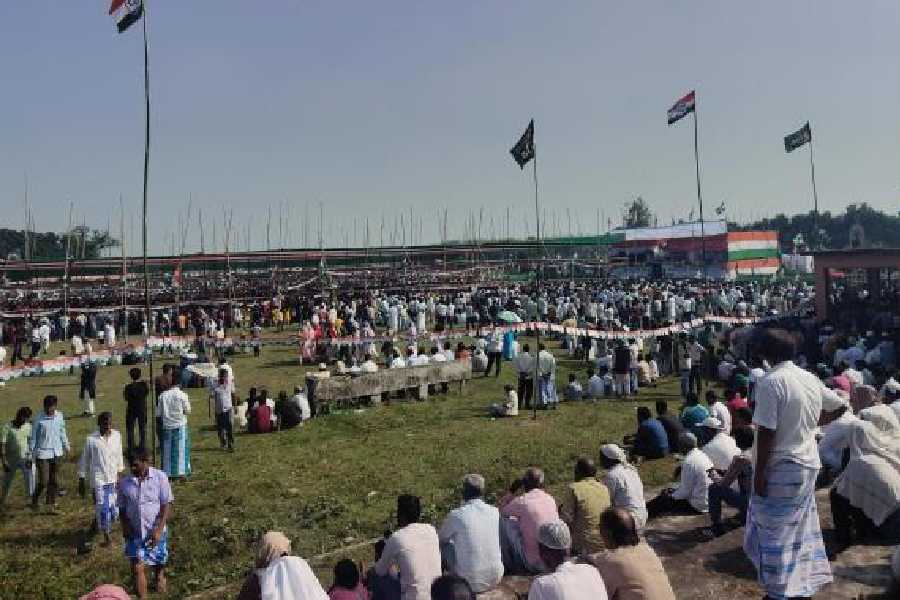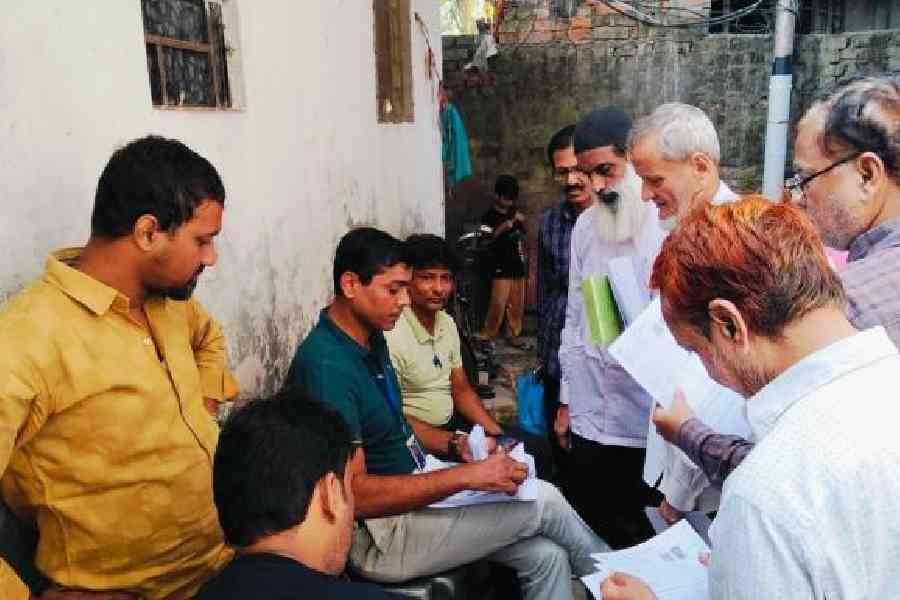Let them in
Ghosh’s workshop in Calcutta looks straight out of a YouTube ‘barn find’ video. Here, a whole clutch of rusty post-war American cars sit cheek-by-jowl. They have been bought at an auction in Texas and imported by a collector who wants them rebuilt to their former glory. There is a variety of Buicks, and a two-door Lincoln hardtop among others.
In 2013, the Indian government allowed import of pre-1950 cars. And while they are in limited supply in India, there are lots lying around abroad than people there would care to save. And they sell at rock-bottom prices compared to the Indian market. Ghosh estimates that these cars would probably cost about a tenth of what they do here. “Even if one pays import duty (237 per cent) on these cars, they still work out way cheaper,” he adds.
This is a trend that could pick up in India. According to Singh, while the popularity of buying and preserving cars among youngsters in the West is on the decline, it’s on the rise in India. An increase in the supply should bring prices down from the hugely inflated levels at present. But the prices have been stagnant for a while.
“In India, these vehicles cost twice or thrice of what they do abroad,” says Prakash. There are many in the market who are hoarding good cars and are holding up supply, adds Singh. Prakash thinks that the freeing up of imports will eventually improve the supply of vintage and classic cars and bring down their prices in the open market as restorers will find it financially feasible for collectors to bring these cars in, fix them up and drive them.
August 28, 2018, was a landmark of sorts for India’s historic cars. That day, at the annual Pebble Beach Concours d’Elegance in California — arguably the most important beauty pageant in the world for things on four wheels — 11 of them were pitted against the cream of the crop from 17 countries in three classes. And the competition was intense.
One of the Indian cars won its class. That and two more from India won special prizes that all classes of cars were eligible for. Four more took the first and second runners-up spots in their classes. And a resident of Indore — Manvendra Singh of Barwani — won the Lorin Trayon Trophy for his all-round contribution to reviving and preserving historic vehicles.
Thanks to its maharajas and other wealthy folk, some of the best historic cars made in the West before World War II had come to India. At Pebble Beach, these cars proved that the quality of their restoration and preservation today is right up there with the rest.
It was also a big day for Marespand Dadachanji, a 45-year-old priest at the Parsi fire temple in Mumbai, who, after his morning duties, has been devoting himself to the revival and maintenance of vintage and classic cars for over 25 years now. A big winner at Pebble Beach was the 1935 Rolls-Royce Phantom II Continental Gurney Nutting Streamline Coupe, owned by Amir and Wendy Jetha of Mumbai, and it was Dadachanji who had restored the beauty to its original resplendence.
The car not only won its own ‘Motor Cars of the Raj: Rolls-Royce & Bentley’ class but also the Lucius Beebe Trophy that goes to the best Rolls-Royce of the show. Dadachanji fixed it up to the original specifications, given by the Maharaja of Jodhpur back in the day. “For Pebble Beach, we did a body-off-chassis restoration. When we took the car apart, we saw a green paint in many places. That’s when we checked the original bill sheet and found that it had been ordered by the Maharaja of Jodhpur in the green-and-cream colours of his polo team,” says Dadachanji. And that’s how it looks today.
Singh, who has curated all five editions of the biennial Cartier Concours d’Elegance in India, started doing restorations back in the 1970s. “Earlier, people used to repair cars to keep them going with whatever best was available. Now people are restoring cars looking at manuals to bring them to their original states,” he says.
India has quite a few advantages when it comes to restoring cars, Singh adds. “The quality of the chrome done in India is better than anywhere else. So cars look better. Also, one can still find machine shops that have been in existence since the 1930s and 1940s. So it is sometimes easier to get parts made as they used to be earlier.”

The 1960 Standard 10 that has been with Karl Bhote’s family from the beginning File
Sometimes vehicles are found in a state in which they can be made road-worthy without such an elaborate process. Some have remained in intermittent use but show the wear and patina of age. There is a trend towards cleaning them up and fixing the bugs, but leaving them largely as they are, with some peeling paint, or maybe a tear in the upholstery. Earlier, these would have been considered the easier restoration projects since most of the stuff would be in place. But the new refrain is: “A car is original only once.”
Bangalore-based collector Ravi Prakash, who owns about 200 vintage cars and does their restoration in his own workshop, says: “This trend has caught on in the last 10-12 years. If I were aware of it earlier, I would have kept a lot of cars without restoring them.... It is like owning antique jewellery, which has its own charm and its own appreciators.”
Opinion over preservation is divided. To start off with, the Indian climate with its heat and humidity is “unkind to cars”, as a restorer puts it. “People say they are leaving it in the original condition, but is it actually original as the way it left the showrooms?” asks Sanjay Ghosh, a Calcutta-based restorer.
Leather, for instance, perishes in India faster than it does in colder countries. His opinion is that the wear and tear has to be repaired even to keep a car going.
Dadachanji maintains that while repairs need to be done, one can just clean up the part before putting it back on, without a fresh coat of paint. To him, the patina tells a tale.
Apart from the Continental, two other Rollers, in the Prewar preservation class, won top honours at Pebble Beach. A 1927 Phantom I Windovers Limousine belonging to Gaj Singhji of Marwar-Jodhpur won the Montagu of Beaulieu Trophy as the most significant car of British origin at the show. A 1921 RR Silver Ghost with open tourer bodywork by James & Co. won the FIVA Prewar Trophy for the “best preserved and regularly driven car” under the regulations of Federation Internationale des Vehicules Anciens, the global body for historic vehicles. This one has covered just a shade over 3,000 miles in its 97 years!
Both of them are looked after by Bangalore-based restorer Christopher Rodricks, who learnt the restoration ropes in Australia in a company that specialised in doing up Rolls-Royces and Jaguars. He says that now Indian owners aren’t settling for anything but the best and, unlike earlier, are willing to pay for it. And while India has extremely skilled people when it comes to working with their hands, there is still a lack of ancillary industries and parts are still comparatively more difficult to source.
OTT jobs
At the other end of the scale from the preservation class is what is commonly called over-restoration. These are jobs where a car is jazzed up beyond what the factory did for it. “When I first did up my 1932 Ford V8 back in the ’70s, I chromed the wire wheels. But this was a car at the lower end of the market and came with painted wheels. Also, I had put in a carpet, which was originally not there, since this was an open car,” says Ghosh. Over time he undid all that.
Dadachanji says you need not do up a car that you “feel like eating it like a cake”. He admits he would be “ashamed” to do the kind of restorations he did in his early days. So he undid what he had done to the 1935 Streamline Rolls and an Antem Bentley.
As more information has become available over the years, the tendency to over-restore is on the wane. The urge to chrome everything in sight, starting from the engine head to the wheels to all sorts of bits and pieces, is less.
The paint is often another sticking point. Some people choose to paint their cars in metallic hues that may not have been available at that time or on that model. “As far back as 1910, Rolls-Royce used to mix fish scale dust with the paint lacquer to give its cars a shimmery finish. So you need to know which car came in which colour,” says Darukhanawala.
Karl Bhote, who owns and has restored a number of cars made or assembled in India after World War II, says: “People wanted to make their cars look exciting. So there was tendency do things like putting whitewall tyres on some cars that did not come with them.” But he is all right with bolt-on bolt-off improvements like, say, an electric pump that would make the car more reliable, if the change can be reversed to the original specifications.
Net worth
Most restorers and car enthusiasts agree that the biggest difference to the quality of restorations in India has been made by access to the Internet, both for information about the model being restored as well as for the sourcing of parts. “The love and lure of old cars is massive. There is a need to keep it running like new. The Internet is a source of information that helps to repair them the right way. People now know better,” says automotive expert Adil J. Darukhanawala.
The Internet has opened up access to owners’ clubs abroad who often have the specifications, drawings and, sometimes, even details like which colour the cars came in which year. The owners’ clubs also have dedicated parts suppliers, all of which have made restoring a car to its original specifications easier. “With the availability of knowledge through the Internet, it is now easier than before to source parts from all over the globe — although at a cost — and equipment is easier to identify, says Calcutta-based Pallab Roy, who, a couple of years ago, had restored the German Wanderer W24 in which Netaji Subhas Chandra Bose made his escape from the city.
A proliferation of vintage and classic car events like the Cartier Concours d’Elegance and the 21 Gun Salute show, which have been bringing in expert judges from abroad, has also helped improve the quality of restorations. People are aware of what gets their cars negative marks — it can be something as small as a wrong wire clip — and try to get the details right. It is, after all, the little things that set the Concours-quality restorations apart.
Preserve first
A trend that has been gaining traction in recent times is that of preserving old cars with dings and scratches rather than restoring them.
Restoration involves taking a car apart part-by-part, cleaning, repairing or replacing the bits needed, painting or chroming and putting them back together to get the vehicle to the condition in which it would have left the showroom. In the process, any trace of its age or what it has lived through is lost. Old cars are often found in a condition where such restoration is the only way of saving it.

Amir Jetha’s prize-winning 1935 Rolls-Royce Phantom II Continental Gurney Nutting Streamline Coupe — restored by Marespand Dadachanji — at the 2018 Pebble Beach Concours d’Elegance Courtesy: Pebble Beach Concours d’Elegance
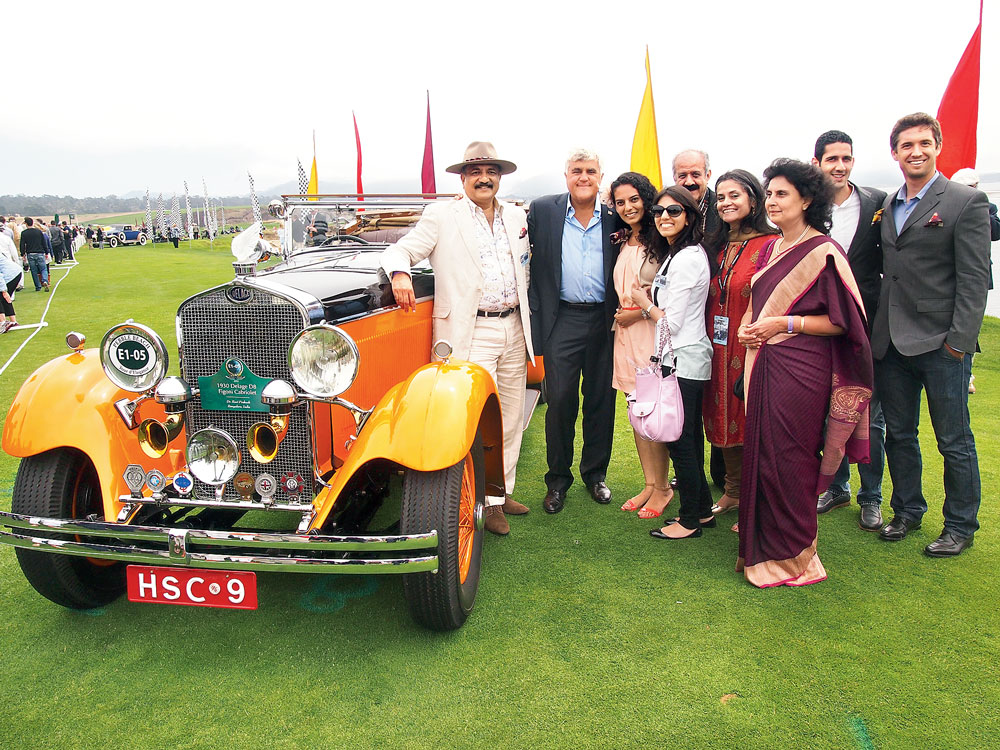
Ravi Prakash (in hat) and his family with their Delage and former talk show host Jay Leno (second from left), who is a car collector himself. Ravi Prakash
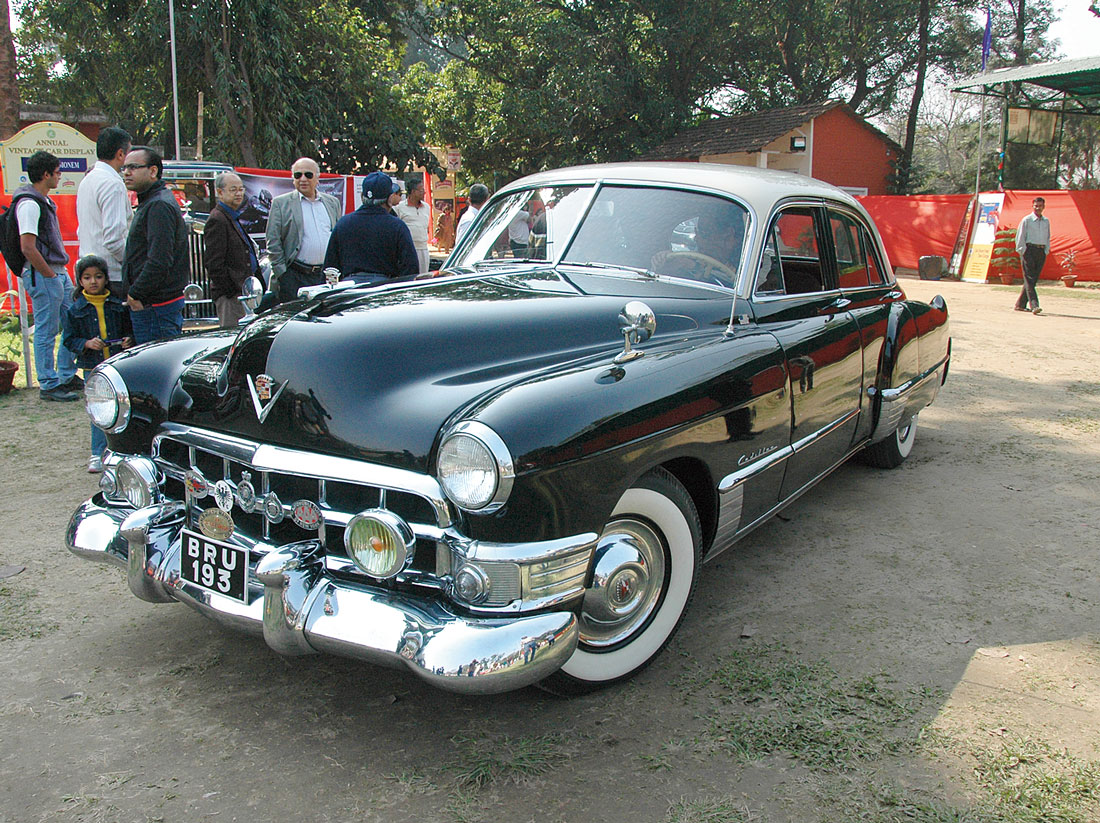
The 1949 Cadillac Series 62 Sedan restored by Sanjay Ghosh File
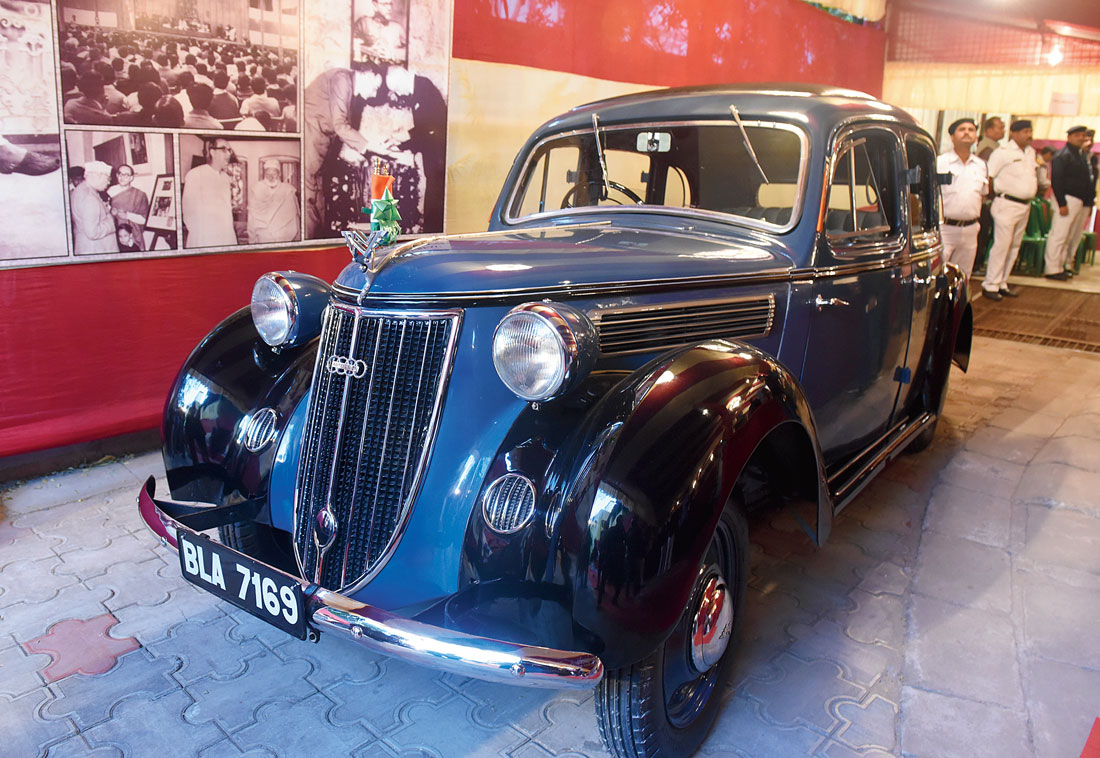
The restored Wanderer W24 in which Netaji Subhas Chandra Bose escaped from Calcutta, at Netaji Bhawan. File

The 1921 Rolls-Royce belonging to the Maharaja of Wankaner which has driven less than 3,000 miles in its 97 years and hasn’t been restored. Courtesy: Pebble Beach Concours d’Elegance

An unrestored 1952 Mercedes 300 Cabriolet Abhijit Mitra


